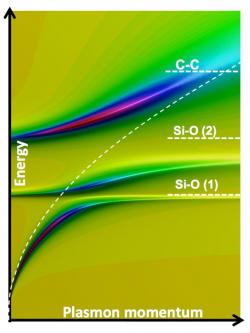Researchers from IBM are studying how plasmons lose their energy in graphene. It turns out that plasmons lose their energy very slowly in graphene, which is good for photonics and quantum optics applications (the longer the plasmons last, the better).

The IBM researchers are using graphene nanoribbons, dots and nanodisk arrays grown on all sorts of substrates (silicon wafers, diamond-like carbon and SiO2, to name just a few). The researchers are using a new technique (based on Fourier transform IR spectrometer) to measure exact plasmon damping mechanisms and rates. Their most important finding is that the graphene plasmons appear to interact strongly with the vibrations of the silicon dioxide substrate surface atoms on which the graphene is deposited. This leads to so-called energy-dependent hybrid plasmon-phonon modes that disperse and decay very differently compared with those modes where graphene is deposited on non-planar diamond-like substrates.
The researchers also discovered that there's strong new damping mechanism when the plasmon energy crosses the intrinsic carbon-carbon vibrational (phonon) energy of graphene at about 200 meV. They also found plasmon lifetimes of 20 fs or shorter where emission of such a phonon is possible.
IBM is researching graphene based photonics applications for quite some time. In April IBM researchers managed to develop a graphene insulator superlattice that achieves a Teraherz frequency notch filter and a linear polarizer.